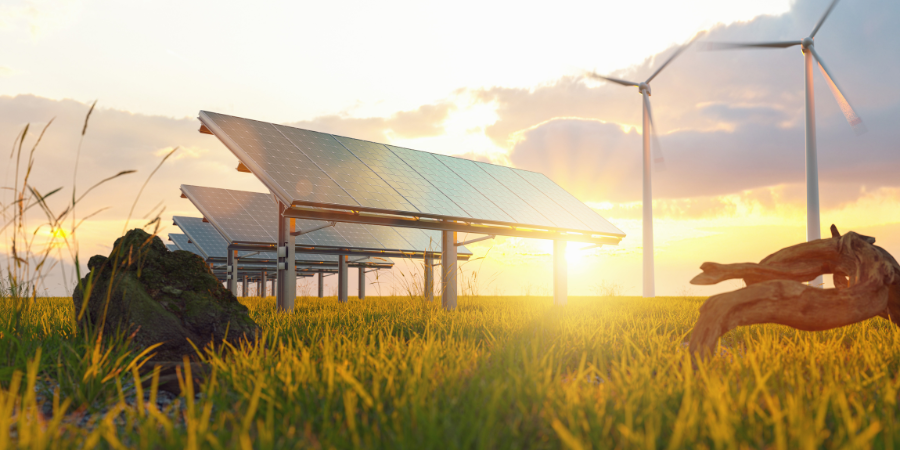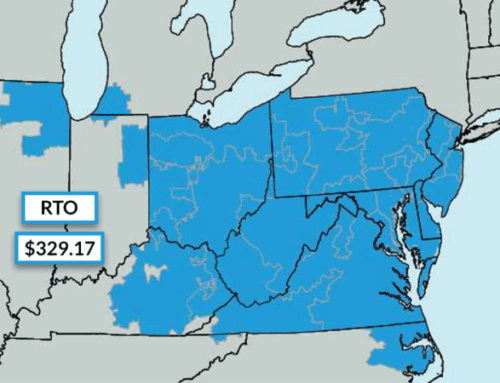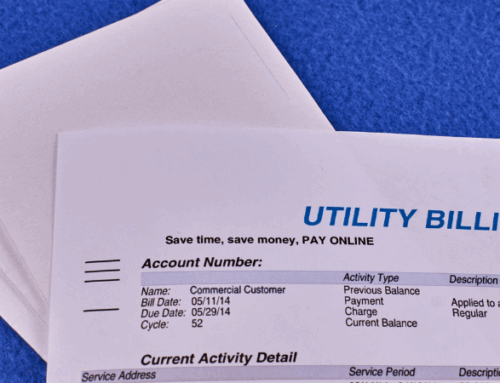The renewable energy sector has seen a dramatic transformation, driven by a global commitment to reduce environmental impact and foster a more sustainable future. This article delves into the five key renewable energy trends shaping the energy sector:
- increased investment and government incentives
- innovative approaches to energy sourcing and supply
- energy technology
- the growing popularity of on-site electricity generation
- the overarching theme of energy transition
As we navigate through each topic, we’ll explore how each trend contributes to a greener planet. From multinational corporations to individual households, the renewable energy revolution is redefining our relationship with fossil fuels, promising a better tomorrow.
2023: A Year In Recap
Before we explore renewable energy industry trends for 2024, let’s first take a glance backward at this past year. In 2023, there were many impacts and significant movements in the renewable energy space.
- An Increase In Total Renewable Capacity: The total power market saw a significant increase in total capacity made available by renewable energy. In fact, renewable capacity grew by 107 gigawatts in 2023.
- Wind & Solar Generation: Wind power and solar power generation also saw an increase in 2023. Together they produced 14.3% of global electricity, compared to 12.8% in 2022.
- Global Energy Crisis: The Russia-Ukraine conflict greatly impacted fossil fuel energy supplies to Europe calling for a major shift toward renewables. This led to several policies such as the EU gas cap and an upward revision of forecasts for renewable capacity additions in the EU in 2023 by 40%.
- Commitments To Abandon Fossil Fuels: In 2023, many countries made commitments to eventually phase out fossil fuels over time. These commitments span from shifting to electric vehicles to closing coal-fired electricity generation plants.
Looking ahead to 2024, the momentum in the renewable energy sector is expected to continue. The emphasis will likely be on accelerating policy support and overcoming energy market challenges to sustain the remarkable progress witnessed in 2023. Let’s explore the future in more detail below.
Renewable Investment & Incentives In 2024
One of the key drivers for the energy sector in 2024 is the push toward Net Zero, with many major global economies now committed to this goal. This commitment is likely to result in massive government investments in electrification, renewables, and hydrogen infrastructure. These developments present a wealth of opportunities for investors and companies in the renewable energy sector.
The U.S. has witnessed a surge in renewable energy investments, spurred by federal initiatives such as the Inflation Reduction Act (IRA) and the Infrastructure Investment and Jobs Act (IIJA). In 2023, these acts led to a historic investment in utility-grade solar farms, community solar programs, battery storage, wind energy, and hydrogen advancement, totaling $227 billion in investment. These trends are set to continue into 2024 with rapid investment in the space.
Furthermore, major government incentives, such as the solar federal investment tax credit, continue to remain in place with additional benefit. In 2024, customers installing solar will not only qualify for the 30% investment tax credit, but may also qualify for additional incentives based on the type of labor used to install the solar and the location of the product.
Energy Transition: A Shift Away From Fossil Fuels
As we move into 2024, we are seeing a clear trend in economies moving away from fossil fuels and transitioning to alternative energy sources. Key trends in this transition include the rising adoption of hydrogen and biofuels as alternative energy sources. Let’s explore some of the ways this energy transition is happening across the globe.
Green Hydrogen
Hydrogen is emerging as a critical aspect of the transition to a cleaner energy system. Hydrogen has an ability to store and release energy without emitting carbon, making it a promising alternative to fossil fuels. The development of green hydrogen, which is produced using renewable energy, offers the dual benefits of utilizing surplus renewable energy and providing a clean energy fuel source. Governments and industries are investing in hydrogen technology and green hydrogen production with numerous projects underway.
Biofuels
Biofuels are derived from biological materials like plant matter and animal waste. These fuels are playing an important role in replacing fossil fuels. In the transportation sector they can oftentimes directly replace gasoline or diesel fuel.
Electrification
Electrification, or the process of converting to electricity, is on the rise, particularly in the automotive industry. There has been a sudden shift in electric vehicles and investment into the infrastructure to support an EV world. As companies like Tesla pave the way for the future, electric vehicles will certainly continue to play an important role in the renewable energy revolution, especially when coupled with other green technologies such as solar.
LNG
LNG, or liquified natural gas, is also playing an important role in a cleaner future. Although natural gas is considered a fossil fuel, it is much cleaner than its coal and crude oil counterparts. In many emerging energy markets, electricity is produced using oil, which can be expensive and very polluting to the environment. Several countries such as Brazil, Chile, and Jamaica have built or are building natural gas powered electric plants that will run on LNG. This will allow these countries to get access to cheaper and cleaner electricity.
Energy Technologies
The evolution of energy technologies towards a more renewable world is marked by the integration of technologies such as microgrids, AI, and blockchain. Let’s explore these in more detail below.
Microgrid Technology
Microgrids play a vital role in green energy. These are localized grids that can operate independently from traditional, larger power grids. They offer increased reliability for communities and are often powered by on-site renewable energy, such as wind and solar.
AI
Artificial Intelligence (AI) is revolutionizing how electric grid operators manage and dispatch energy sources. AI’s predictive capabilities enable better forecasting of energy demand and production, leading to a more efficient electric grid and less wasted power.
Blockchain
Blockchain technology, although new, has promising potential in the energy sector. This technology will allow consumers to certify and trade renewable energy certificates and even trade excess renewable energy on a peer-to-peer network without having to utilize a centralized grid. Although much of this technology has yet to be implemented, it will play a critical role in the future of a more sustainable planet.
On-Site Power Generation
On-site power generation through the installation of solar panels directly at a consumer’s home or building is leading the way in the energy transition. Not only is this the most direct way of generating renewable electricity, but it can also allow for a more sustainable and reliable source of energy due to its on-site location.
Furthermore, the emergence of battery technology is enhancing on-site power generating systems. Prior to effective storage solutions, customers still had to rely on the traditional electric grid as a back-up source of power when solar systems were not producing. Energy storage, however, allows customers to completely unplug from the grid and utilize stored power during these off peak periods. This combination not only provides a sustainable and renewable energy source but also offers independence from the traditional power grid, reducing reliance on fossil fuels.
Interested In Exploring Renewable Energy For Your Business?
Our team of energy experts can help you navigate the complexities of renewable energy as it relates to your operations. Not only do we have access to several sources of green energy supply, but we can also help you to design and construct your own commercial solar system or on-site generating system. Contact us today to learn more and to contribute to a more sustainable future.



